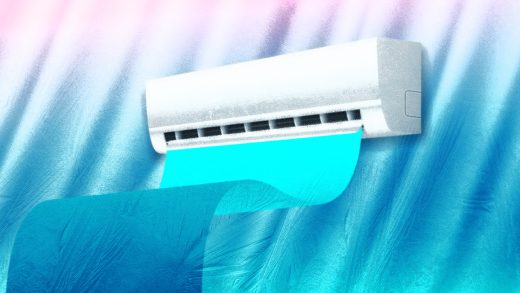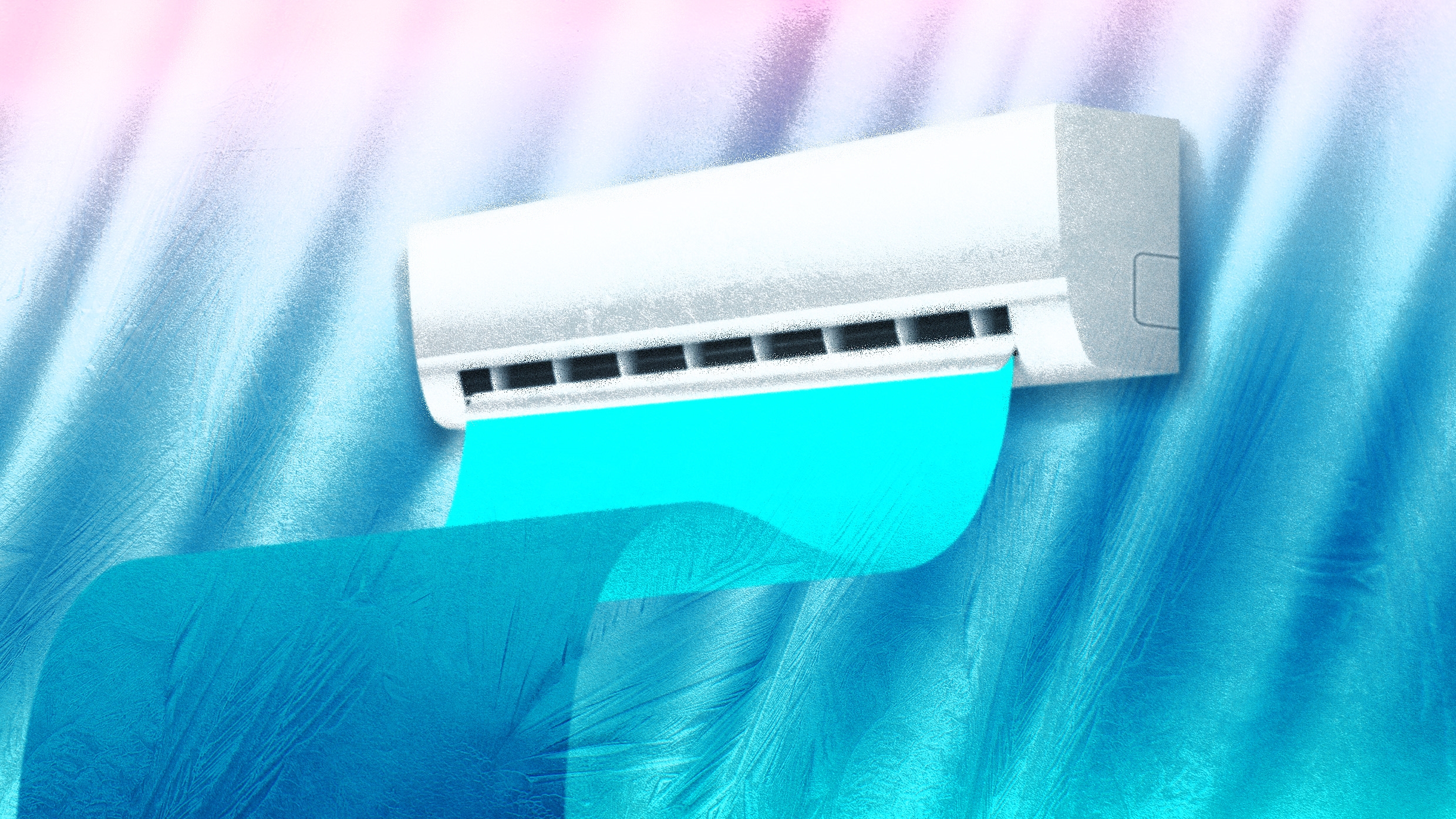These crazy new AC innovations are going to change how we keep cool
Though it’s only early summer, already the heat index soared above 120 degrees in parts of Texas and Louisiana the past week. (In Corpus Christi, the heat index reached 125 degrees on Saturday.) After days of surging temperatures in India, in the latest of a series of extreme heat waves in the country this year, dozens of people recently died. A spring heat wave in Asia, made 30 times more likely by climate change, sparked fires, melted roads, and closed schools. And earlier this month, global temperatures temporarily spiked 1.5 degrees Celsius (2.7 degrees Fahrenheit) above pre-industrial levels, a key limit in the Paris climate agreement.
As extreme heat grows, air conditioner sales are surging: By 2030, the world may add another billion AC units. In 2018, the International Energy Agency predicted that the number of air conditioners would triple by the middle of the century, driven both by rising temperatures and the fact that more people around the world can now afford the tech.
Skyrocketing adoption of ACs is a solution to extreme heat, but it’s also part of the problem, since air conditioners are also making climate change worse. The technology’s high energy use helps make it responsible for around 4% of global emissions, roughly twice as much as from all of the world’s airplanes.
Part of the reason is that the refrigerants in air conditioners are also ultra-potent greenhouse gases that can be 2,000 times worse for the climate than CO2 if released. (The worst refrigerants are being phased out because of the global Kigali Agreement, but it’s a slow process.) Air conditioners also make cities hotter as they pump out heat from people’s homes. And the huge demand on the grid on hot days can lead to blackouts. A new solution is necessary.
In a lab near Boston, a startup called Transaera is now testing prototypes of new technology that can shrink energy use in ACs by as much as 50%. “For any air conditioner to keep you comfortable, it’s doing two things: It’s cooling the air, but it’s also removing moisture, and today’s AC does that by brute force,” says Ross Bonner, cofounder and chief technology officer of Transaera.
Transaera’s first residential product looks like an ordinary portable air conditioner. But inside, components are coated with materials called metal organic frameworks—nano-size structures that act like a sponge, pulling moisture out of the air so the air conditioner doesn’t have to use extra energy to get rid of humidity. The heat that the AC generates is used to dry the material so it can soak up more moisture.
The company has partnered with Carrier, one of the world’s largest HVAC equipment manufacturers, to work on bringing the technology to market. Because the approach adds a coating to existing components that are already produced at large scales, “that allows us to rapidly bring down the cost so it’s competitive with today’s AC systems,” says Bonner. “We think that’s critical because the main driver that we see for AC sales across the board is price.”
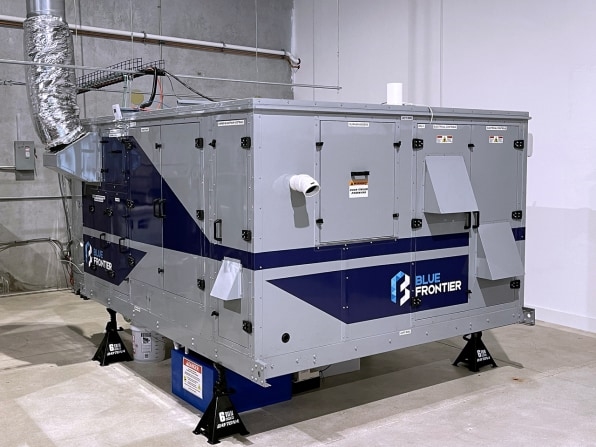
Blue Frontier, a startup backed by Bill Gates’ Breakthrough Energy Ventures, is also focusing on humidity as a way to shrink energy use. Instead of a refrigerant, the company uses a salt solution that absorbs water from the air, and then separately cools the air. Unlike typical air conditioners, the system actually becomes more efficient as it gets hotter outside (at its best, the system can cut energy use by as much as 90%).
Because the salt solution can store energy, it also means that the system can use power from the grid at targeted times when the most renewable energy is available, and then still work without pulling power when demand is highest.
The company will pilot the technology over the next two years and plans to bring its first product to market in 2025. The first customers, commercial or apartment buildings with large HVAC systems, will subscribe to “cooling as a service” rather than buying equipment. “We realized that if we made the capital cost zero, or close to zero, we could have a disruptive implementation of our technology in terms of the number of units that go out,” says Blue Frontier founder and CEO Daniel Betts. While the startup is starting with large buildings to help it scale up quickly, the same technology can later be incorporated into equipment for individual homes.
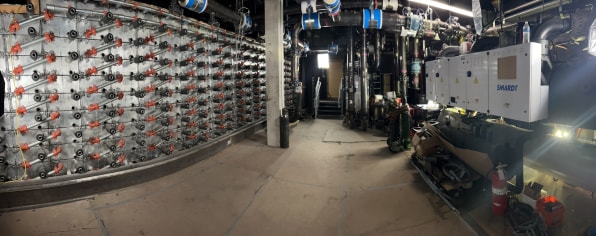
Other startups are also designing systems that can use energy at targeted times. Israel-based Nostromo makes a system it calls an “IceBrick,” which uses electricity to freeze water into ice during the day, when there’s abundant renewable energy available on the grid.
When power demand grows in the late afternoon and evening, it uses the ice to provide chilled water for cooling. The technology works in large commercial buildings that use chillers; a large system can nearly eliminate the carbon footprint of cooling a building. The company recently installed the tech at The Beverly Hilton, where it will also provide cooling at the adjacent Waldorf Astoria Beverly Hills.
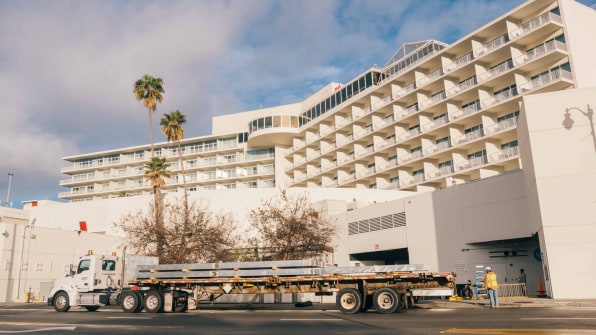
Some new technology can help avoid the need for air-conditioning in the first place. New coatings, like the world’s whitest white paint, can reflect heat away from buildings so well that they can stay cool, in some cases, without ever turning on the AC. (The design isn’t perfect; barium sulfide, one key material used to make the paint, has a high carbon footprint because of mining and processing.)
Researchers from Purdue University who developed the “whitest white” coating are in the process of spinning off a startup. Other engineers are working on similar coatings in color, like an iridescent coating that can cool a building as effectively as some air conditioners. At least one startup is working on smart windows that can automatically open and close as the temperature cools at night.
Several new products are likely to come to market within a few years. But even now, consumers have better choices than the status quo. Right now, consumers often choose the lowest-cost air conditioners, even if picking something more efficient would mean that they’d save more money over time on electric bills.
“There are already air conditioners in the market that are two to three times more efficient than the most commonly sold technology,” says Ankit Kalanki, manager of the Carbon-Free Buildings program at the nonprofit RMI. “Consumers should go for the best-available product on the market. It will cost you more upfront—there might be a 25% to 30% cost premium compared to the least efficient or the market average product sold on the market. But when you look at the lifetime of the air conditioner, you can expect that premium to be paid off within three years.” It’s also important to choose air conditioners that are the right size for the space, so they don’t cycle more than necessary.
Rewiring America, a nonprofit focused on building electrification, argues that anyone considering buying an air conditioner should get a heat pump, since heat pumps work in both directions—heating and cooling—and can dramatically cut emissions from heating. (While there’s less energy saving for cooling, heat pumps do save energy by being “variable capacity,” meaning they can run with less power when needed, rather than just being on or off.) Incentives from the Inflation Reduction Act can help with the cost.
Low-tech solutions can also help, including planting trees for shade, using old-fashioned shutters and shades, and relying on simple fans when it’s possible. Strategies to shrink energy use matter even as the world moves to clean electricity, Kalanki says.
If it takes less power to run equipment, that means that fewer power plants and transmission lines have to be built. “Efficiency is important because that will make the clean energy transition much faster,” he says. It also leaves more electricity available for other growing sources of demand, whether that’s coming from electric cars or induction stoves.
(34)

